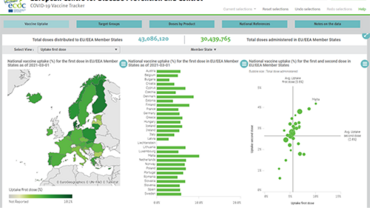Interim public health considerations for COVID-19 vaccination of adolescents in the EU/EEA
This technical report provides a set of interim public health considerations to support EU/EEA public health authorities taking decisions on the administration of COVID-19 vaccines to adolescents (12- to 18-year-olds). As new evidence is continuously being generated and safety monitored on an ongoing basis, it is essential to consider the latest available information and recommendations issued by regulatory and public health authorities at national level.
The focus of this document is on the overall potential public health impact, rather than on the individual benefits and risks, of COVID-19 vaccination in adolescents.
Executive summary
Key messages
- The vaccination of adolescents against COVID-19 should be considered in the broader context of the COVID-19 vaccination strategy for the whole population, including its overarching goals, the status of implementation, and its priorities.
- The vaccination of adolescents at high risk of severe COVID-19 should be considered a priority, as with other age groups.
- The overall direct benefits of vaccinating adolescents will mainly depend on the incidence of SARS-CoV-2 infection and on the prevalence of underlying conditions increasing the risk of severe COVID-19 in this age group.
- The individual direct benefits from COVID-19 vaccination in adolescents are expected to be limited in comparison to older age groups.
- The overall benefit for the general population of vaccinating adolescents will be proportional to the SARS-CoV-2 transmission within and from this age group.
- Given the anticipated reduced individual benefit-risk ratio from COVID-19 vaccination of adolescents compared to older age groups, careful consideration of the epidemiological situation and of vaccine uptake in older age groups should be given before targeting this age group.
- It is important to continue to monitor the spread of variants of concern among younger individuals and to continue to assess the actual burden of COVID-19 in younger age groups also in relation to COVID-19 sequelae (e.g. ‘long COVID’).
- Equity issues concerning vaccine availability and access need to be carefully considered when deciding on expansion of COVID-19 vaccination to groups with lower individual risk of severe disease.








